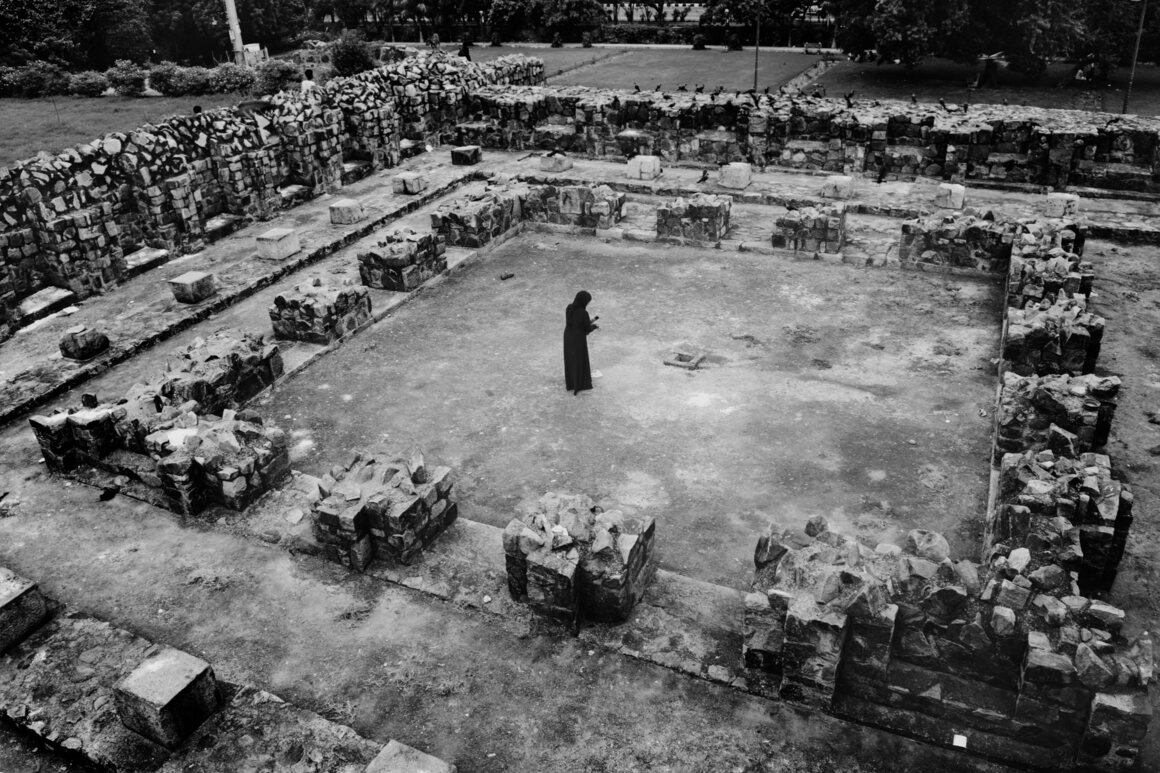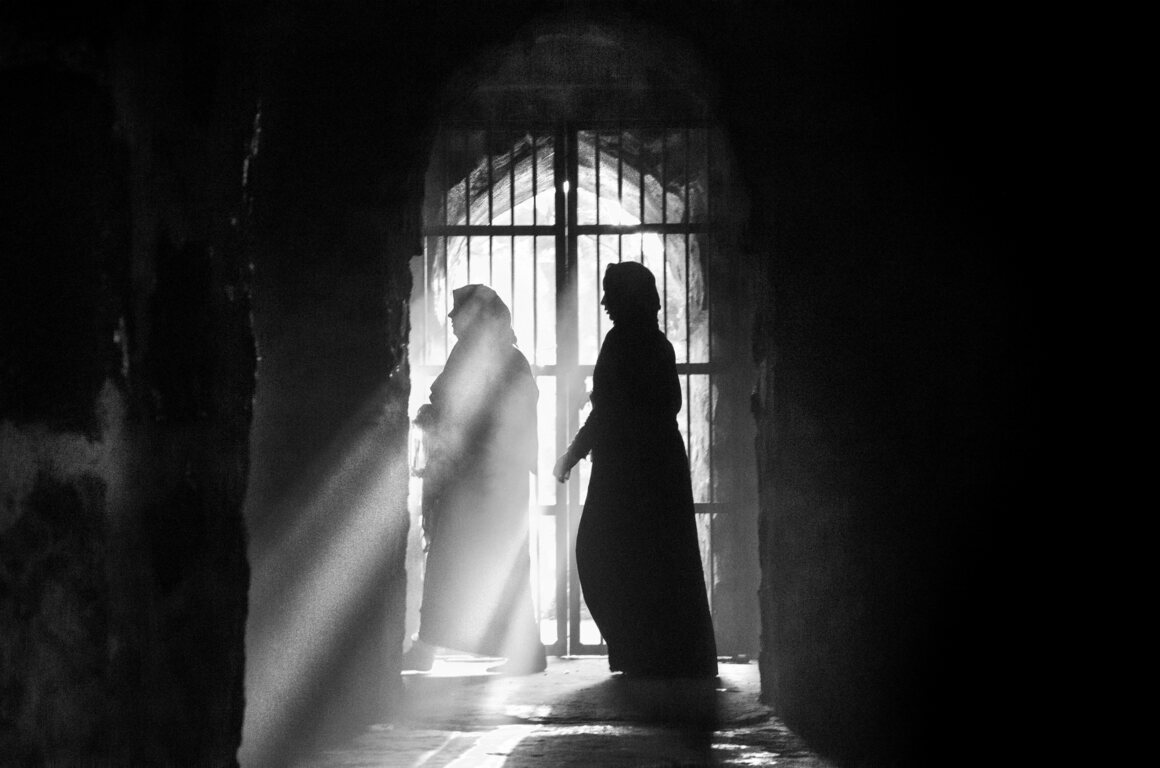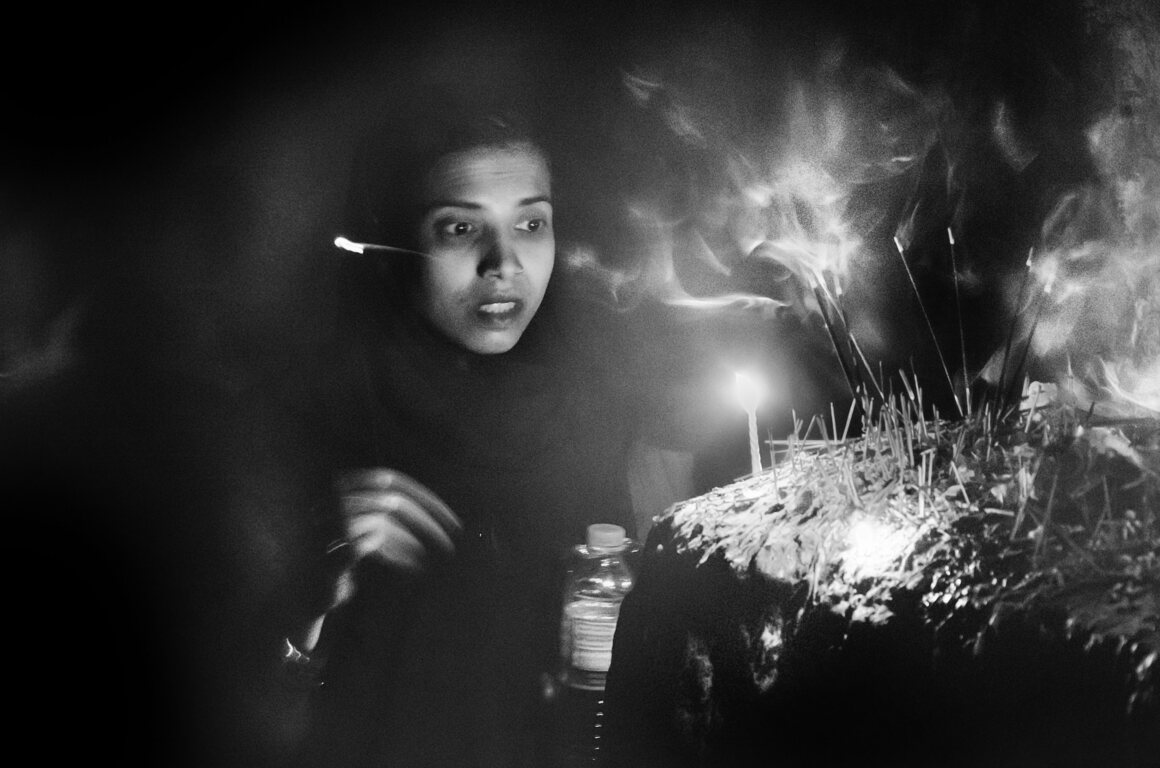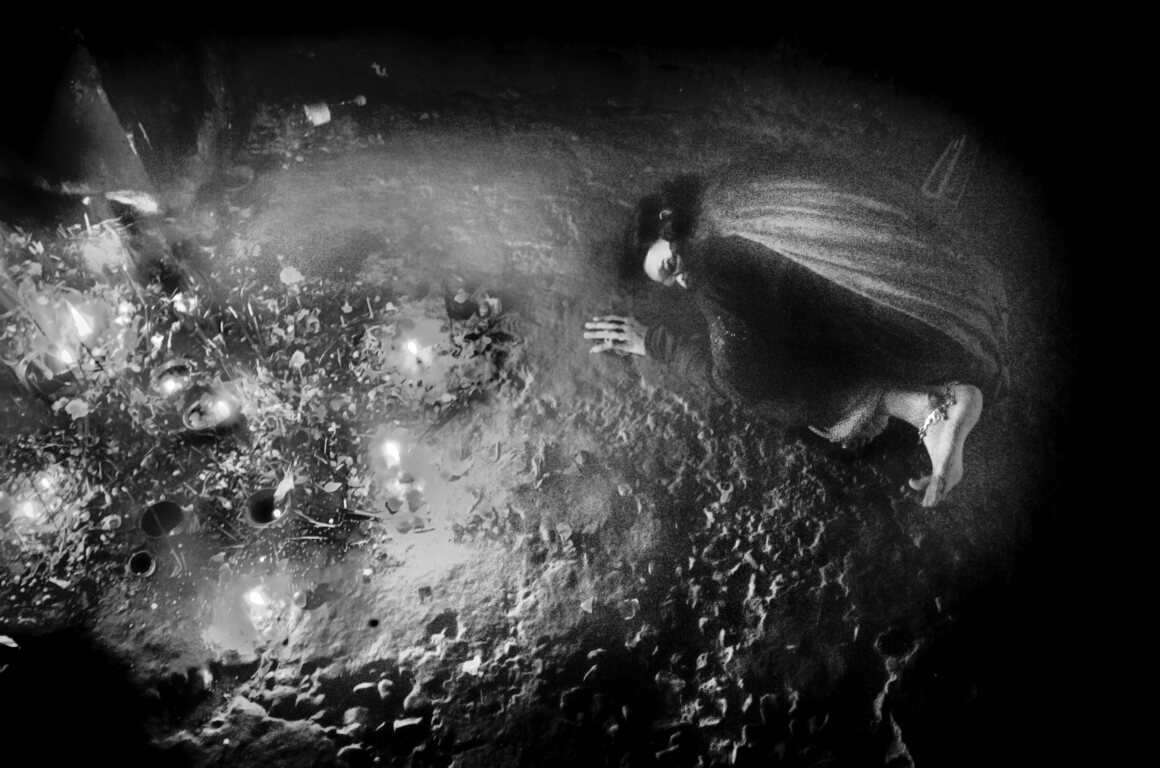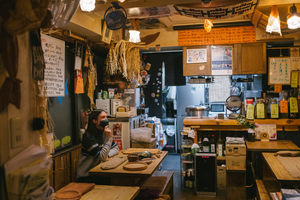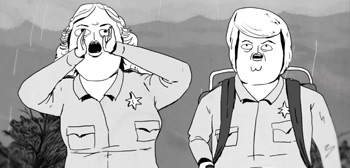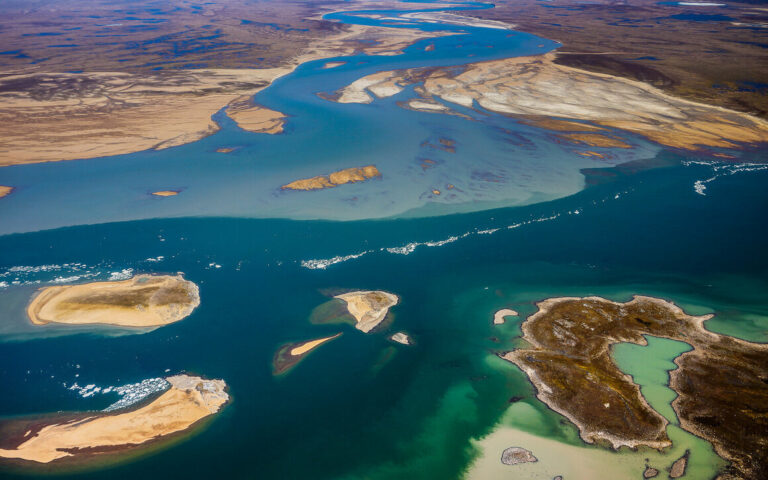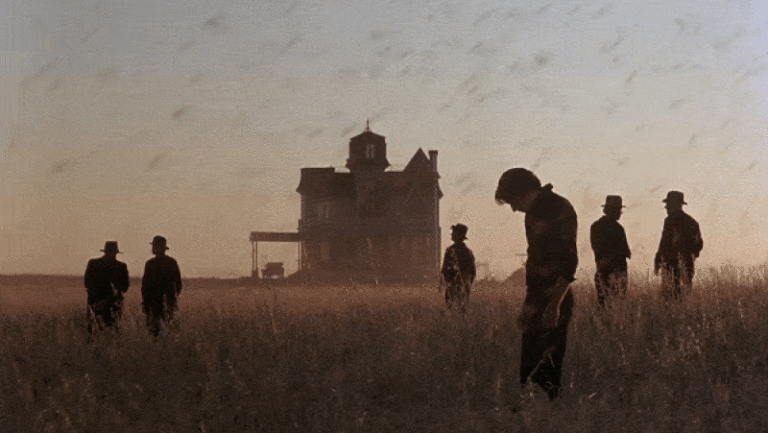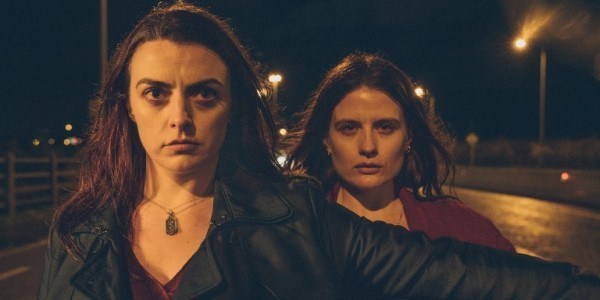A Photographer’s Journey Into New Delhi’s House of Djinns
It was a sweltering summer afternoon when photographer Taha Ahmad first walked into Feroz Shah Kotla, a sprawling 14th century citadel in New Delhi. At the gate, the guard warned him to take care of his camera. Cheels, birds of prey also known as black kites, circled above his head, trying to catch pieces of meat thrown skyward by a man. Ahmad wore a black t-shirt and dark blue trousers, colors that he hoped would help him blend in with the crowds. He joined a throng of men, women, and children, most of them Muslim and dressed in black. They were there for an audience with the djinns, supernatural beings that are said to reside in the nooks and crannies of the citadel ruins. According to Islamic cosmology, djinns are made of smokeless fire and humans of clay. Appearing in human or animal form, djinns could be good or bad.
That first visit led to several more. Over five years, Ahmad captured in detail djinn worship as practiced at Kotla. His images help tell stories of a deeply entrenched belief in the supernatural, and of human suffering and desperation at least partly rooted in recent history.
After British rule ended and India and Pakistan were partitioned in 1947 along religious lines, the Muslims who stayed in India found themselves in a precarious position, with many displaced and subjected to violence. Today, India’s Muslim minority, about 15 percent of the country’s population, continues to be marginalized, with limited economic and educational opportunities. Many turn to ancient religious traditions, such as the djinns, to find solutions to their problems.
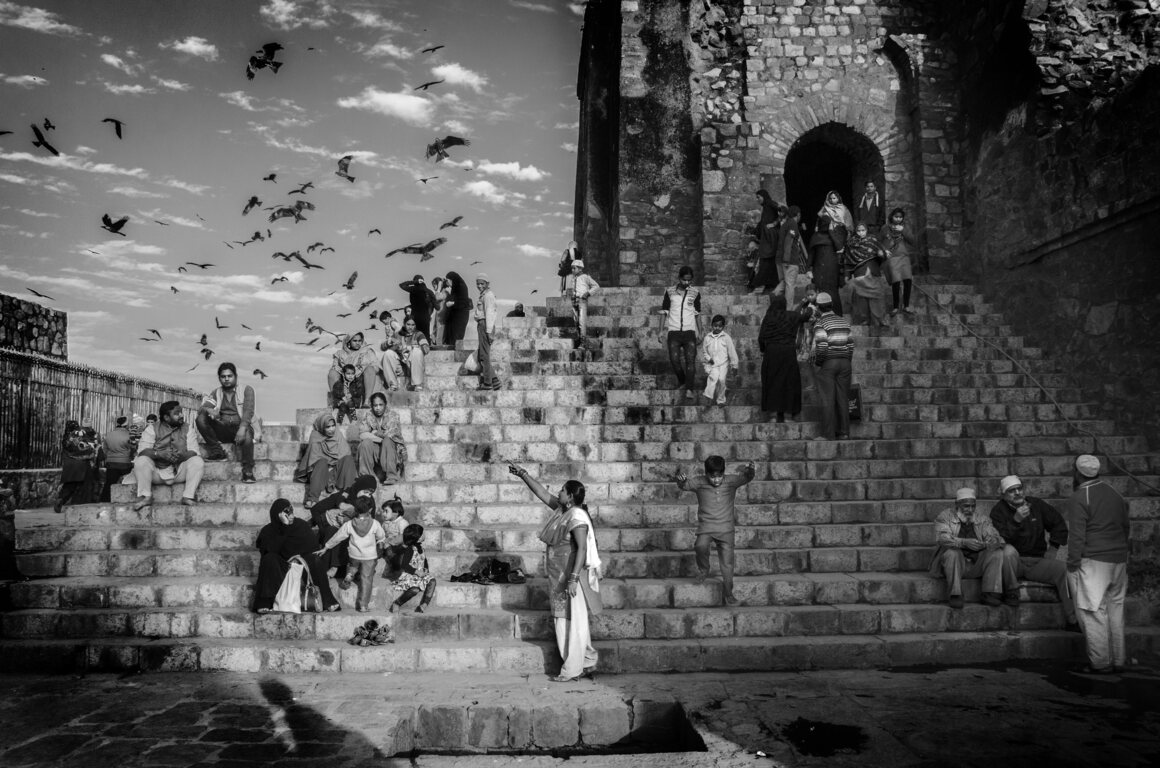
As a child Ahmad was taught that there are two parallel worlds, one inhabited by humans and the other by djinns. Tales of seeing or even interacting with djinns were commonplace in the Muslim neighborhood where he was raised, in the northern Indian city of Lucknow. “There’s not a single household that doesn’t have a story of djinns, and this is not just limited to Muslim homes,” he says. Fascinated by supernatural beings, Ahmad decided to visit the site after reading about Feroz Shah Kotla, just eight miles from the university where he was a student.
“On my first visit, I did feel uncomfortable. Several people walked up to me and told me not to take any photos,” he says. While that initial visit was out of curiosity, it gave Ahmad the idea for a project. “What I witnessed turned out to be completely different from what I expected and that’s when I decided to capture it as a visual narrative.”
For two months, every Thursday afternoon, he went to Feroz Shah Kotla without his camera, just to observe. He befriended the caretakers, who acted as his guide and pointed out things he might not have seen on his own. Ahmad began bringing his camera, and documenting what he saw.

Built by Feroz Shah Tughlaq when he ascended the throne of Delhi, all that remains today of the once-majestic complex are crumbling structures with subterranean passages and chambers, a baoli, or stepwell, and the ruins of a mosque. “Feroz Shah Kotla is known as djinnat ka mazaar or the abode of djinns,” says Vanderbilt University’s Anand Vivek Taneja, author of Jinnealogy, a book about the citadel. “Although in ruins it has occupied a significant presence in the sacred geography of the city for a long time. Archival records show that from the early 20th century veneration took place here.” The number of people coming to the site increased in the 1970s, after a particularly tumultuous period of urban reshaping that displaced many of the city’s poorest residents, who may have in turn sought solace and aid from the djinns.
Every Thursday, the faithful continue to visit the site to seek answers, blessings, or forgiveness. “I have seen people lighting incense sticks and candles in the niches, even pasting coins and letters. They would make their offerings, pray and leave,” says Ahmad. These messages, stuck to the walls, tied to railings, or pushed deep into crevices and cracks, were written in Hindi or Urdu, or even Arabic or Persian. “When I got a chance to read the letters, I realized they were arzis, requests of a very personal nature,” he adds. One of the letters was written by a woman who had come there to seek forgiveness for her husband, who had tried to kill the man she was having an affair with. Another had passport photos of an entire family, desperate because one of the children was missing.
In many cases, believers sought the aid of self-proclaimed babas, or god-men, who promised to hasten their case for a small fee. “Over time I realized these babas were extorting money from the poor. I overheard one baba telling a person, ‘the more money you give me, the faster I will forward your case in the court of the djinns.’ These were uneducated people who did not have the means to question them,” says Ahmad.
Ahmad says a cleric he approached about the babas told him, “We don’t tell them to do this, but they come on their own and so we don’t stop them.” Ahmad was particularly concerned with the way women, the majority of visitors, were treated at the site. Taneja says that, in a predominantly patriarchal society where women often don’t have a voice, they may turn to the djinns for solutions. Ahmad’s images show women in their most vulnerable moments, weeping, clutching their children, or crying out in agony. “I wanted my viewer to feel uncomfortable seeing the photos. It was never about creating beautiful images,” he says.
The photographer often followed believers into narrow chambers saturated with smoke from candles and clay lamps, making it hard to stay inside for long. “I would usually set a 15-minute timer, stepping out to catch my breath,” he says. On one occasion, he lingered a little longer in the tight, murky space. “When I came out, I was tearing up and was out of oxygen. I was bedridden for three days,” he says.
Ahmad was often shooed away, and at times even physically assaulted. He learned to hide his camera in his jacket to take a shot, and to find tactful ways to extricate himself from emotionally charged situations. Despite the resistance he faced, he says “I wanted to show the difference between what I was taught and the reality I saw. I hoped to shed light on the social injustice that happens there.”
He adds: “In India, you cannot question caste or religion directly. By undertaking this project, I was questioning my own religion and belief system.” He hopes to exhibit his work at Feroz Shah Kotla someday. “This project has been done with the help of these people and has been done for these people,” Ahmad says. The young photographer’s work, says Taneja, “turns the lens on the human suffering that’s happening in the city. His images capture some of that pain and human drama that would otherwise go unnoticed.”
